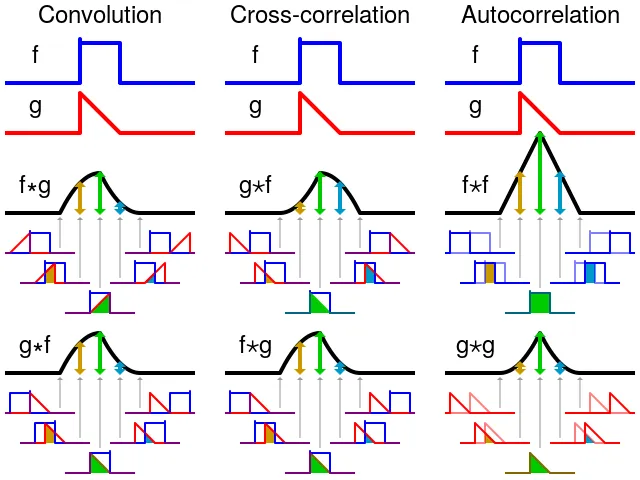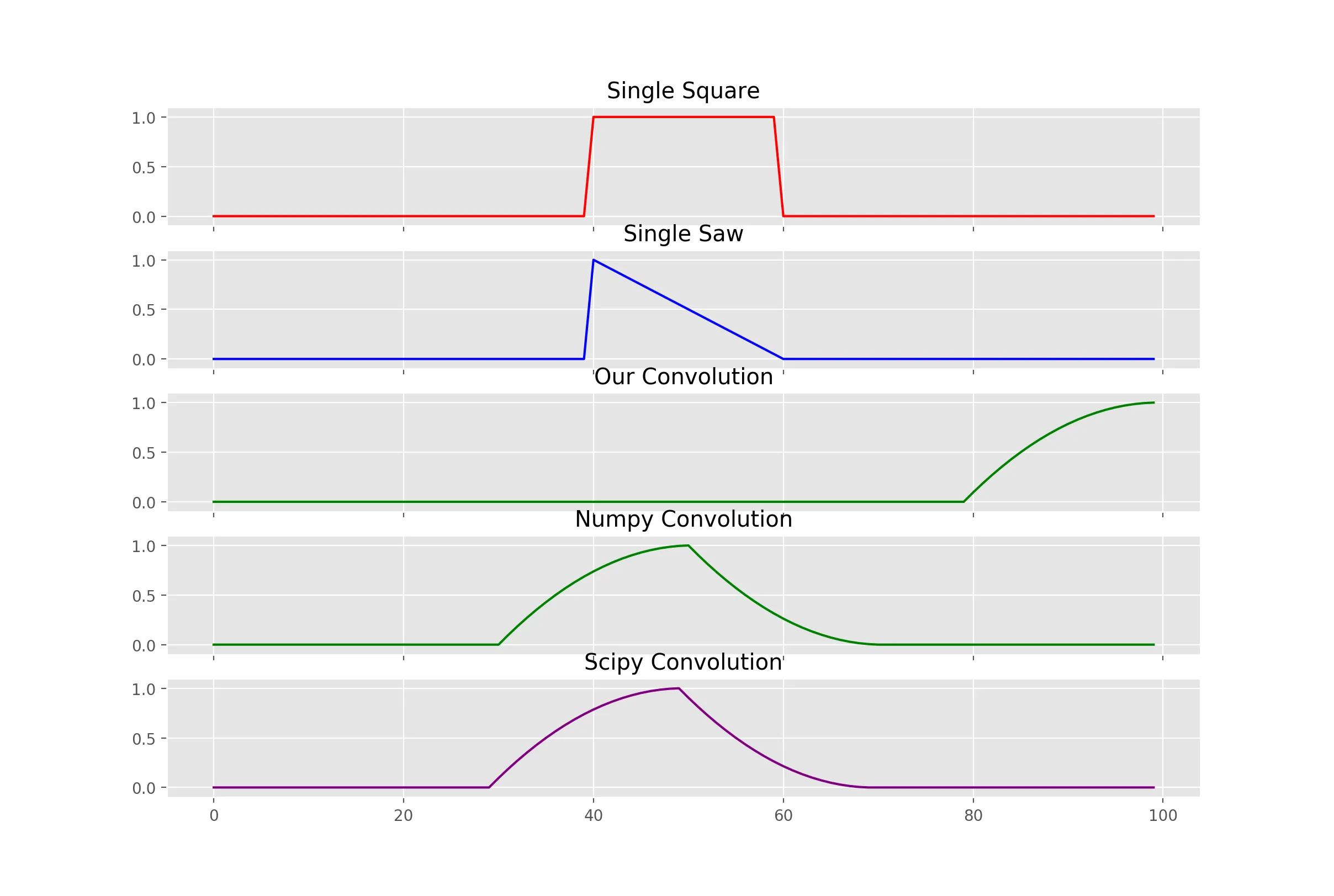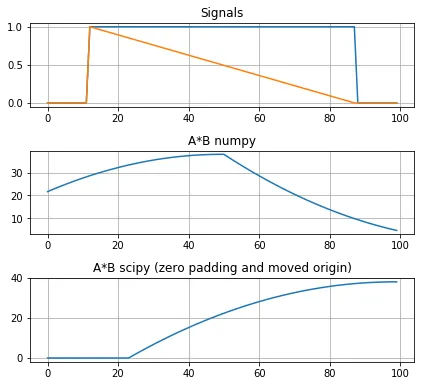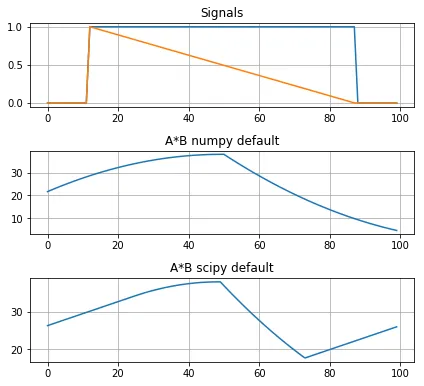我想手动编写一个一维卷积,因为我正在尝试使用核对时间序列进行分类,并决定制作著名的维基百科卷积图像,如此处所示。
这是我的脚本。我正在使用数字信号卷积的标准公式。
import numpy as np
import matplotlib.pyplot as plt
import scipy.ndimage
plt.style.use('ggplot')
def convolve1d(signal, ir):
"""
we use the 'same' / 'constant' method for zero padding.
"""
n = len(signal)
m = len(ir)
output = np.zeros(n)
for i in range(n):
for j in range(m):
if i - j < 0: continue
output[i] += signal[i - j] * ir[j]
return output
def make_square_and_saw_waves(height, start, end, n):
single_square_wave = []
single_saw_wave = []
for i in range(n):
if start <= i < end:
single_square_wave.append(height)
single_saw_wave.append(height * (end-i) / (end-start))
else:
single_square_wave.append(0)
single_saw_wave.append(0)
return single_square_wave, single_saw_wave
# create signal and IR
start = 40
end = 60
single_square_wave, single_saw_wave = make_square_and_saw_waves(
height=10, start=start, end=end, n=100)
# convolve, compare different methods
np_conv = np.convolve(
single_square_wave, single_saw_wave, mode='same')
convolution1d = convolve1d(
single_square_wave, single_saw_wave)
sconv = scipy.ndimage.convolve1d(
single_square_wave, single_saw_wave, mode='constant')
# plot them, scaling by the height
plt.clf()
fig, axs = plt.subplots(5, 1, figsize=(12, 6), sharey=True, sharex=True)
axs[0].plot(single_square_wave / np.max(single_square_wave), c='r')
axs[0].set_title('Single Square')
axs[0].set_ylim(-.1, 1.1)
axs[1].plot(single_saw_wave / np.max(single_saw_wave), c='b')
axs[1].set_title('Single Saw')
axs[2].set_ylim(-.1, 1.1)
axs[2].plot(convolution1d / np.max(convolution1d), c='g')
axs[2].set_title('Our Convolution')
axs[2].set_ylim(-.1, 1.1)
axs[3].plot(np_conv / np.max(np_conv), c='g')
axs[3].set_title('Numpy Convolution')
axs[3].set_ylim(-.1, 1.1)
axs[4].plot(sconv / np.max(sconv), c='purple')
axs[4].set_title('Scipy Convolution')
axs[4].set_ylim(-.1, 1.1)
plt.show()
以下是我得到的情节:
正如您所看到的,由于某种原因,我的卷积被移位了。曲线中的数字(y值)是相同的,但是移位了约一半的滤波器大小。
有人知道这是怎么回事吗?



